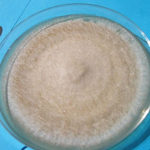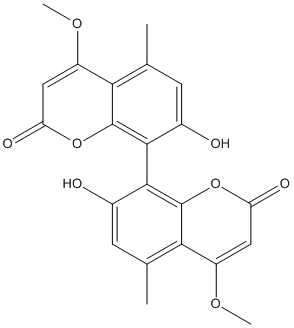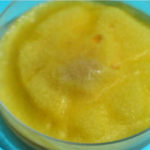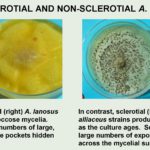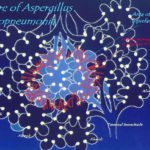Date: 26 November 2013
Secondary metabolites, structure diagram: Trivial name – Orlandin
Copyright: n/a
Notes:
Species: A. nigerSystematic name: [8,8′-Bi-2H-1-benzopyran]-2,2′-dione, 7,7′-dihydroxy-4,4′-dimethoxy-5,5′-dimethyl-Molecular formulae: C22H18O8Molecular weight: 410Chemical abstracts number: 69975-77-5Selected references: Orlandin: a nontoxic fungal metabolite with plant growth inhibiting properties. Cutler, Horace G.; Crumley, Farrist G.; Cox, Richard H.; Hernandez, Oscar; Cole, Richard J.; Dorner, Joe W. Georgia Coastal Plain Exp. Stn., Sci. Educ. Adm., Tifton, GA, USA. Journal of Agricultural and Food Chemistry (1979), 27(3), 592-5.
Images library
-
Title
Legend
-
Sclerotial strains produce bright yellow, floccose mycelia. Sclerotial strains produce small numbers of large, fused sclerotial bodies in discrete pockets hidden within the mycelium.
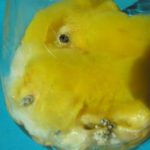
-
Aspergillus alliaceus. No branching was observed in A. alliaceus conidiophores. Sclerotial strains typically produce large numbers of exposed, uniformly-shaped sclerotia across the mycelial surface.

-
Aspergillus alliaceus – Sclerotial. A. alliaceus strains produce flat, pale mycelia that darken as the culture ages.Sclerotial strains typically produce large numbers of exposed, uniformly-shaped sclerotia across the mycelial surface.

-
A. alliaceus strains produce flat, pale mycelia that darken as the culture ages.Sclerotial strains typically produce large numbers of exposed, uniformly-shaped sclerotia across the mycelial surface.
